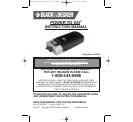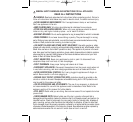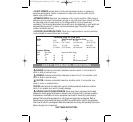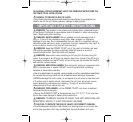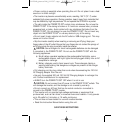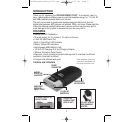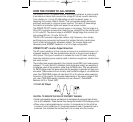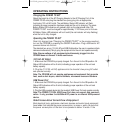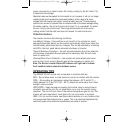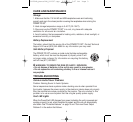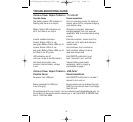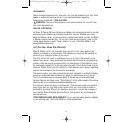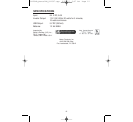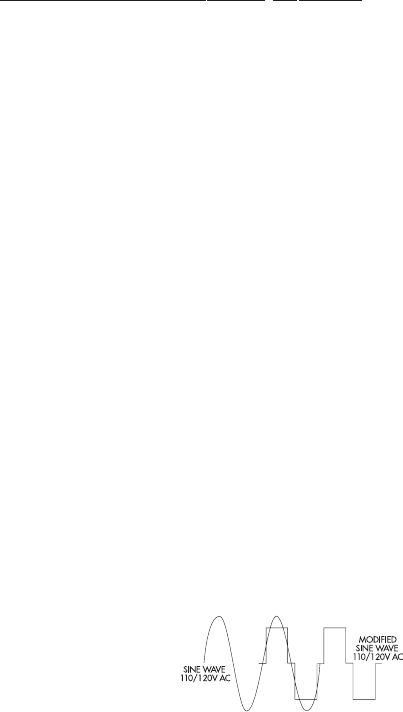
HOW THE POWER TO GO
®
WORKS
The POWER TO GO
®
is a power inverter with built-in batteries. A power inverter
is an electronic device that converts low voltage DC (direct current) electricity
from a battery to 115 volt AC (alternating current) household power. In
designing this inverter, Black & Decker
®
has incorporated design techniques
previously employed in computer power supplies. The result of these design
innovations is a smaller, lighter and easier-to-use power inverter.
The POWER TO GO
®
Inverter converts power in two stages. The first stage is a
DC-to-DC conversion process that raises the low voltage DC at the inverter input
to 145 volts DC. The second stage is a MOSFET bridge stage that converts the
high voltage DC into 115 volts, 60 Hz AC.
The DC-to-DC converter stage uses creative, high frequency, zero voltage
switching power conversion techniques that replace the bulky transformers
found in less technologically advanced models. The inverter stage uses
advanced power MOSFET transistors in a full bridge configuration.
POWER TO GO
®
Inverter Output Waveform
The AC output waveform of this inverter is known as a modified sine wave. It is
a stepped waveform that has characteristics similar to the sine wave shape of
utility power. This type of waveform is suitable for most AC loads, including
linear and switching power supplies used in electronic equipment, transformers,
and small motors.
The modified sine wave produced by this inverter has an RMS (root mean square)
voltage of 115 volts. Most AC voltmeters (both digital and analog) are sensitive to
the average value of the waveform rather than the RMS value. They are calibrated
for RMS voltage under the assumption that the waveform measured will be a pure
sine wave. These meters will not correctly read the RMS voltage of a modified sine
wave. Non-TRUE RMS meters will read about 20 to 30 volts low when measuring
the output of this inverter. For accurate measurement of the output voltage of this
unit, use a TRUE RMS reading voltmeter such as a Fluke 87, Fluke 8080A,
Beckman 4410 or Triplett 4200.
115 Volt AC Output
CAUTION: TO REDUCE THE RISK OF PROPERTY DAMAGE:
• Certain rechargeable devices are designed to be charged by plugging them directly
into an AC receptacle. These devices may damage the inverter or the charging circuit.
• When using a rechargeable device, monitor its temperature for the initial ten
minutes of use to determine if it produces excessive heat. If excessive heat is
produced, this indicates the device should not be used with this inverter.
6
CPI20XB_ManualEN_041307.qxp 6/25/07 2:07 PM Page 6



